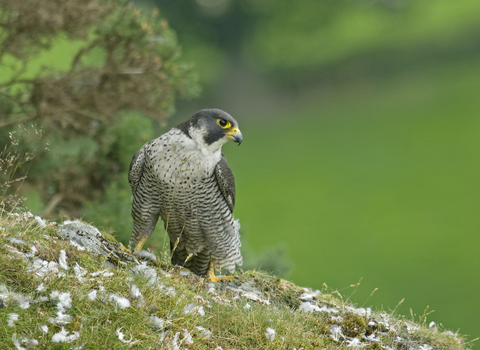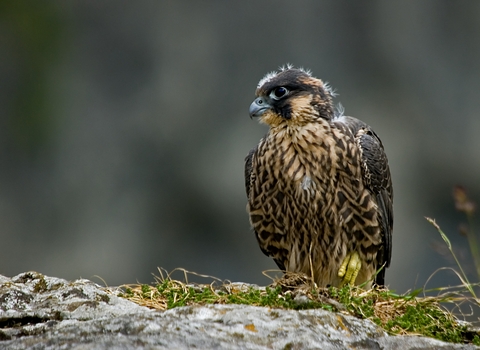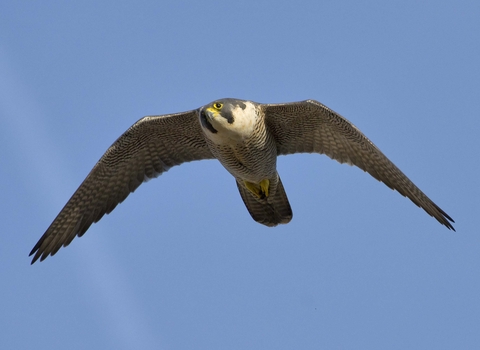
©John Hawkins

©Neil Aldridge

©Bertie Gregory/2020VISION
Peregrine falcon
Like many of our birds of prey, the peregrine falcon was so persecuted, numbers fell dramatically. Thankfully, this super-speedy flyer is now making a comeback, particularly in our towns, where it nests on tall buildings.
Enw gwyddonol
Falco peregrinusPryd i'w gweld
January to DecemberTop facts
Categori
Stats
Length: 40-54cmWingspan: 1.2m
Weight: 670g-1.1kg
Average lifespan: 6 years
Classified in the UK as Green under the Birds of Conservation Concern 5: the Red List for Birds (2021). Protected in the UK under the Wildlife and Countryside Act, 1981.
Conservation status
Habitats
Ynghylch
Until recently, the peregrine falcon was only found in the north and west of the UK. Yet, over the last couple of decades, it has been spreading south. In recent years, it has found some unusual nest sites, including Derby Cathedral and the BT Tower in Birmingham! These tall, city structures replicate the precipitous cliff edges that it would naturally nest on.What to look for
The peregrine is our biggest falcon; it is dark slate-grey above and white below, with black bars across its chest and belly. It has a white throat and cheeks, and a strong, black moustache and mask.Where to find
Nests in North and South West England, Wales and Scotland on coastal cliffs, but is increasingly being seen throughout the country.Roeddech chi yn gwybod?
Peregrines are among the fastest animals on the planet, reaching speeds of up to 200 miles per hour when 'stooping' - diving down on its prey from a great height. Prey is usually taken mid-air and consists mostly of birds like feral pigeons and collared doves.Gwyliwch
Peregrines (https://vimeo.com/447523792)
Peregrines by John Bridges
